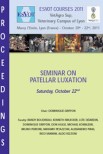Summary
Reasons for performing the study
There is limited information on international endurance rides and on risk factors for eliminations.
Objectives
To describe and compare the frequency of occurrence of elimination due to lameness and metabolic reasons from Fédération Equestre Internationale (FEI) endurance rides (≥100 km) during 2008–2011 in all countries and to assess risk factors for elimination due to lameness and metabolic reasons.
Study design
Retrospective unmatched case–control study.
Methods
Data collected from the FEI website included the following: the country where the ride was held; the year; the result for each horse–rider combination; the number of entries in each class; whether the class was restricted to young riders; and the winning speed. Descriptive data were summarised, and univariable and multivariable logistic regression analyses were performed to assess risk factors for eliminations due to lameness and metabolic reasons.
Results
Between 2008 and 2011, there were 30,741 horse starts at FEI endurance rides of 100–160 km distance in 47 countries. Of all started horses, 30% were eliminated for lameness. Eliminations for metabolic reasons were recorded for 8.7% of all started horses. There was a large range of winning speeds amongst countries (10.2–29.5 km/h). Multivariable analysis revealed that the risk of elimination due to lameness was significantly associated with the country where the ride was held, the year, the distance of the ride and the number of entries. Elimination for metabolic reasons was significantly associated with the country where the ride was held, the year and the number of entries.
Conclusions
Differences existed among elimination rates at FEI endurance rides in different countries (2008–2011). Lameness was the most common reason for elimination globally.
Potential relevance
These results provide objective global data on endurance riding that can replace anecdotal information, which has been the base of opinions, decisions and regulations.









